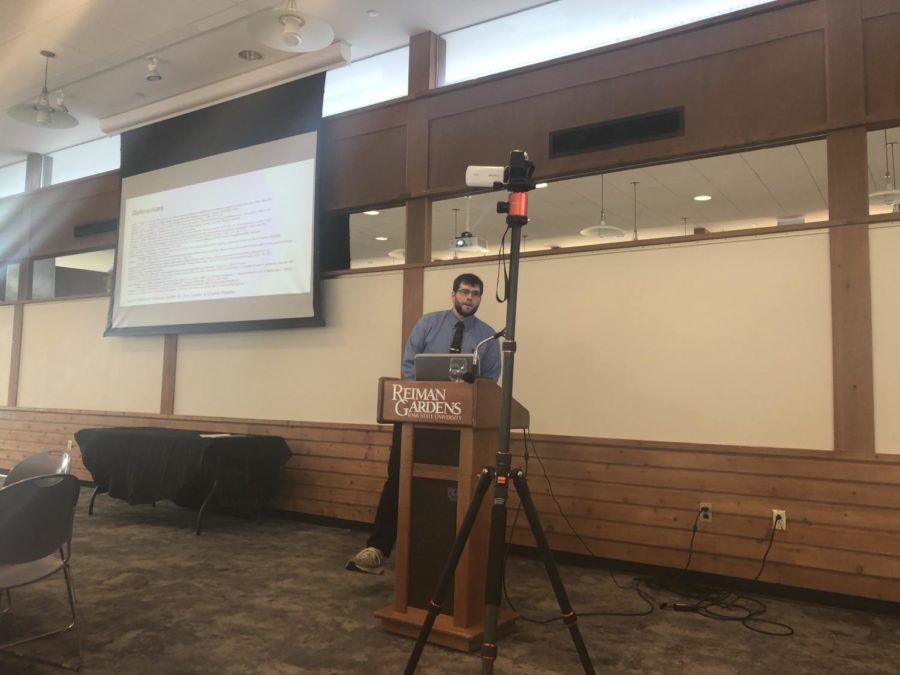‘Nature at Noon’ event explains optical illusions
December 12, 2019
Attendees of this month’s “Nature at Noon” event gathered at Reiman Gardens on Thursday to learn about optical illusions and perception with Xander Toftness, graduate student in cognitive psychology.
“Nature at Noon” is a series of events offered at Reiman Gardens on the second Thursday of every month where researchers present some of their work. This month, Toftness presented information on optical illusions and how the human brain perceives them.
“I hope that people have a lot of fun interacting with the optical illusions and might be inspired to, you know, think about their own brain a little bit more,” Toftness said.
Toftness began the presentation by explaining the process of sight. Sight doesn’t all happen in the eyes. Rather, light entering the eye is processed through the brain, which gives humans the image it perceives, creating sight.
This process is rather heavy — for example, the two-dimensional reflection of light must be made three-dimensional, meaning the brain must add depth to the image. The reflection is also upside down, and the brain must flip it, Toftness said.
“Perception, not sensation, determines what we see,” Toftness said.
Sometimes the brain can make mistakes. These mistakes, Toftness said, can be caused by not enough information, conflicting information or information being disrupted. Optical illusions take advantage of these mistakes.
Toftness proceeded to show the audience some optical illusion images, including two pictures of chess pieces and a picture of cars photoshopped to appear in a line. The chess pieces sat in front of two hazy backgrounds, one darker than the other. In one picture, the pieces appeared to be white, and in the other, they appeared to be black. However, the pieces were actually the same color.
In the car picture, the car appeared to be increasing in size further down the line, but the cars were actually all the same size — the way they are overlapped simply tricks the brain into believing they are growing. Packets containing more optical illusions were also passed out.
“What you see isn’t really what’s out there,” Toftness said.
Toftness explained three case studies in which the brain made a mistake in its perception process. Each one was caused by one of the three reasons for mistakes in perception that Toftness had stated earlier: not enough information, conflicting information or information being disrupted.
One was an example of Charles Bonnet syndrome, a syndrome of the brain often caused by cataracts or macular degeneration. It causes the afflicted to hallucinate due to a lack of visual information. The subject of the case study, an 81-year-old woman, hallucinated pigeons.
The second case study was an example of environmental tilt, a phenomenon in which someone’s vision appears sideways or upside down. In this case study, a 30-year-old woman experienced a tilting of her vision, causing her to swerve to the side of the road.
The third case study featured Alice in Wonderland syndrome, which causes temporary changes in properties, such as size, color or shape of objects. It can have several causes, but is common in children. The subject of the case study was a nine-year-old boy who saw distortions in the size of his body parts.
Toftness wrapped up the presentation by stating his three main points: perception, not sensation, determines what we see; you are always making educated guesses to create perceptions; and not everyone shares the same perceptions.







